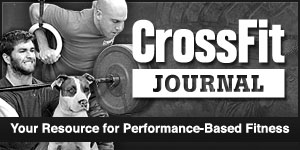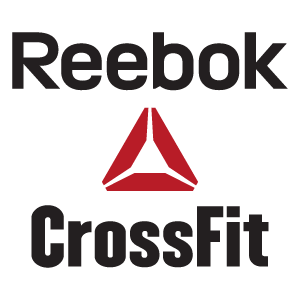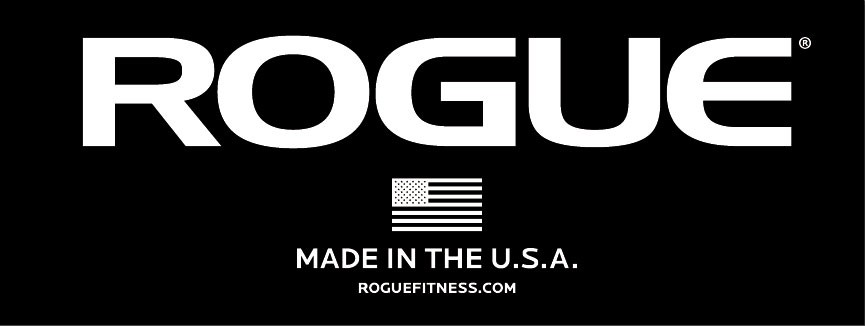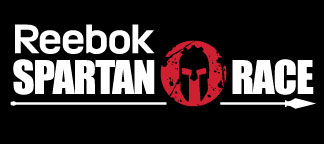Strength is one of those things that most people think they know what it means, but in the sport of weightlifting, there is so much more to it. Strength for weightlifters is more than just how much you can move. It also involves being strong enough to get into, and hold positions to make lifts, as well as doing the hard stuff you don’t want to do in order to be your best.
Some of these aspects of strength are simple and straight forward. Move this weight in this fashion. Easy enough. Others are not so simple. Training your body to hold a position doesn’t have such tangible feedback. Mental strength is even harder to measure. Each of these aspects contributes to the strength of a weightlifter, and without even one, chances of success are diminished.
Leg Strength: Squat
Every person who has even tried the sport of weightlifting knows that the foundation of strength is squatting. The two variations that I stick with are the front squat and back squat. There are some schools of thought that use only the front squat as it is more specific to catching and standing up with a clean. I am not one to eliminate possible tools. While yes, the front squat is more specific to the clean, there is no better variation for absolute force development than the back squat. Implementing both of these different variations into a program can be tricky but there are multiple successful ways of doing so. Some coaches eliminate back squats all together for the last few weeks. This is a more specialization strategy. This works well for lifters who don’t have a weakness with their posture, and getting a stimulus and feel for heavy weight are the primary goals.
Another tactic would be to taper down the front squats and get most of the work from the back squat. This is a strategy that can be used with a lifter who has plenty of leg strength, but posture starts to turn poor as they fatigue. Just touching a few singles in the 85% to 95% range with the front squat and doing more back squatting in the 2-5 rep range around the 70% to 87% range allows such a lifter to still get a large stimulus to the legs, without dealing excessive stress to the back and postural strength so close to a meet. The plan would be to conserve those for when they are needed on the platform. This strategy sometimes means front squatting only once a week while back squatting two times a week. Frequency also depends on how much you would like to spread the volume. Sometimes a bunch of shorter squat workouts is easier to recover from, while others prefer to keep the number of squat days down and getting more volume in each training session. These are only a few of a myriad of squat strategies that exist. Finding one that works for a specific athlete takes knowledge of their strengths and weaknesses, as well as their stage in training development.
Back Strength
No matter if you are holding a bar in your hands, on your back, or in the front rack position, the weight is tied into the system of your body by means of the shoulders. It is often overlooked that when you are mid-pull, your back is a long lever that connects the legs to the point of attachment of weight- the shoulders. This makes for one very long link in the chain where things can go wrong. Lifters continue to complain of being weak, yet they front squat 50 or 60 kilos more than they can pull off the floor in good position. If you can move the bar properly with light weight, logic would then say you are not having a technical issue, but a strength issue, and a commonly overlooked culprit is the back.
Everything from the erectors to lats to rhomboids are responsible for maintenance of posture and position in both the pull and catch of the lifts. When a lifter cannot stay over the bar long enough and they shift to a vertical posture too soon, a likely weakness is the back because this movement transfers stress to the legs. In order to fix this, I suggest adding in both rowing movements as well as hip extending movements. Bent over rows, inverted rows, pull ups, upright rows along with RDL’s, good mornings, and back extensions.
Postural Strength
Much of this is related to the back strength section, but it is necessary to address some additional notes. All of the back work is necessary for proper posture, but that is only one half of the trunk. Imagine a tree where one half received plenty of nutrients and the other withered and nearly died. In the end, the entire tree would come down. This is our torso. The abs play a major role in addition to the back. Posture is maintained by strength all the way around. After you have spent time learning from Dr. Quinn Henoch and Ryan Brown on how to use your abs, then you must make them strong. It is important to not only make them strong at holding position. Weightlifting can become dynamic and lifters need to have the strength to adjust under load. Adding both flexing, lateral and rotational trunk work on top of some isometric work is a sure way to create a solid pillar of support for your posture. Some of my favorites include weighted sit ups without hooking your feet under anything, weighted Russian twists, weighted barbell rotations, and uneven barbell side bends.
Hamstring Strength
The hamstrings play a major role in second half of the pull. Not only do the help accelerate the bar, but they need to be strong enough to support the position of staying over the bar before a lifter transitions to a vertical push. If the back is strong and the hamstrings are weak, the lifter will still likely transition early likely causing the hips to come forward too soon and the weight shifting forward in the foot too early. This all leads to missed attempts. Gaining sufficient hamstring strength isn’t as common of an issue among athletes, but novice lifters tend to show a great lack in this area. While RDL’s and good mornings also address this weakness, this needs to also be approached from another direction. You can’t only work on the hamstrings from a hip axis. Movement at the knee is also important for the overall integrity of the system. My number one favorite movement is the Russian Lean.
Start on your knees on a pad of some sort, (not very comfy on the bare floor) and have your toes tucked under. Don’t point your toes as this will allow the calf muscles to get involved and reduce the effect on the hamstrings. Then have a partner hold down your feet as you descend slowly to the floor with your chest. Keep your hands in front of you in case you cannot control the decent entirely. Be sure to keep your hips straight and don’t allow any flexion there. Once you reach the floor, pull with your hamstrings and try to pick the person holding your feet down off the floor with your heels. These are a much more advanced variation than your basic glute-ham raise in the machine, and you need only a partner and something to keep your knees from grinding on the floor.
Shoulder Strength
The shoulders are an area of great concern for many lifters. Including the many overhead strength movements is a game in itself because the shoulders can sometimes be much more sensitive to volume. Presses, Push Presses, Snatch grip presses, Zots Presses- They all take a toll on the shoulders. Sore shoulders can sometimes be resolved with a more defined progression of volume over a longer period, rather than diving too deep into a lot of overhead strength work. If that isn’t resolving the issue, then some more therapeutic means would be necessary. The problem is that many are mistaking weakness for lack of mobility. There is a great difference between not being able to move in a range versus not being strong enough to put yourself through a range of motion. Posterior shoulder strength is probably the biggest problem for people who don’t feel like they can get into the right position in an overhead squat. Some of this is strengthening the larger back muscles we mentioned earlier with the rowing movements, but another aspect of this is simply learning to control your shoulder to move as it is meant to. Traditional shoulder circuits can be useful for developing the strength necessary for keeping the shoulder where it is supposed to be.
The problem is that these things are tedious and not exciting. Everyone gets sick of doing I’s Y’s and T’s as well as bent over raises, V’s, and sword pulls. The truth of it is that these are the things that are not only going to keep you in the right spot, but are also going to keep those joints healthy through training and competition. You can’t train hard if your shoulders hurt all the time, so keep up on the maintenance work so you can keep hammering the fun stuff.
Deadlifts
Deadlift variations are useful early on in a phase for strength development because they allow a lifter to focus on position and not have to worry about accelerating the bar at the top. This allows the to focus on certain aspects, such as staying over the bar longer which can help address a few different aspects listed above. There are a few things that need to be noted when doing deadlift work before putting it into a program. First, clean and snatch deadlifts are not conventional deadlifts. This needs to be clearly stated. The set up is different, the initiation is different and the movement pattern is different. It is not useful for a weightlifter to practice a conventional deadlift. Second, it is important to keep the weights used for deadlifts within a reasonable range of the actual lift, such as no more than 110% of the best lift of that variation. A lifters best lift is just that for a reason. Somewhere something is breaking down and if we practice moving heavy weight with broken down technique, this will transfer negatively. We can make up for this through volume though. Doing a few sets of 4 snatch deadlifts at 105% will definitely create a significant stimulus as well as help address certain weaknesses in the pull.
These numbers are very individualized in the end, depending on a lifters weakness. If the back is always the first thing to go, it is a better bet to stay under the 100% mark and create a better strength base with more volume in these movements. If timing is the issue, then sometimes you can push the numbers a little more and focus on that without having to worry about the strength breakdowns.
Here is a rough outline of how a week could look when you are in an early development phase focusing on general strength for a lifter who has good leg strength, but needs work on posture. The lifts will still be included, but will likely be a partial variation or from a certain position or blocks. I will just list the general type as this is not the focus of this piece. The strength work is written in all capital letters.
Monday: snatch work, BACK SQUAT- VOLUME, clean pull work, STRICT PRESS, ROW VARIATION, BARBELL ROTATIONS
Tuesday: clean work, SNATCH GRIP PUSH PRESS, RDL, SHOULDER CIRCUIT- FRONT RAISE, SIDE RAISE, BENT OVER RAISE, WEIGHTED SIT UPS
Wednesday: snatch work, jerk work, FRONT SQUAT, snatch pull work, PULL UPS, UNEVEN BARBELL SIDEBENDS
Thursday: OFF
Friday: snatch work, clean and jerk work, BACK SQUAT- HEAVIER, WEIGHTED BACK EXTENSIONS
Saturday: PUSH PRESS, SNATCH DEADLIFT, CHIN UPS, WEIGHTED RUSSIAN TWISTS
Sunday: OFF
Grip Strength
For whatever reason, this has come up a number of times. It’s hard for me to understand because this has never been something that even crosses my mind, much less causes problems. I honestly believe that if you are doing the work the right way, this won’t be an issue. If you grab a bar every day, your grip should develop right along with your lifts. If you strap yourself to a bar and don’t force your hands to do some work, then yes, grip will become an issue. Another way to develop the grip is to not use a hook grip on auxiliary barbell work. There is no sense in hook gripping when doing bent over rows. Limit the equipment that you cant use in competition to better prepare for competition.
Mental Fortitude
“Our whole club is consumed by how shit feels. They think they are only in good shape when stuff feels easy. Fact is, you have to be physically and mentally in shape. You have to be fucking tough!” This is something that my coach had sent to me on the topic of how things “feel”. Clearly he has a clear point of view on it, as do I. Sure there are days when you want to complain and gripe about how heavy the bar feels. As athletes, we naturally vent a little. What you can’t have happen is to let that get to your training attitude and approach to your training session. Simply because something feels heavy doesn’t mean you don’t pull on it as hard. In fact, when something feels heavy, you should fight tooth and nail until your hands fall off to pull on that as hard as you can.
Stop worrying about how things feel. This is why you need a coach. Let someone else be the judge of how things are going. In weightlifting, you have to understand that there are going to be days that you don’t want to touch the bar. It hurts. It feels like the steel is biting you every time you grab hold. There are days when 70% feels like 105% and there are days when you will get completely buried by 85%. This is all part of the experience. You take these things and learn from them. Not only yourself, but your coach uses these things to learn from as well. If you always feel good when you train, you likely aren’t training hard enough. If you never over reach, you are not reaching your full potential. This sport is a balancing act on the fence of training enough and training too much. You have to trust in the person writing your program to know that they are expecting these things and will adjust numbers accordingly. In the end, it is your grit that gets you to the finish. Can you shut up and do the work? Even if you vent a little, can you still step on the wood and let that bar bite, squeezing harder to numb the pain?
This game isn’t so mental because of the technical aspect- most of that hard development is done over a relatively short time in a training career. Fine tuning takes diligence and dealing with the ups and downs of training are the truly heavy burdens on the mind. You have to take these, and run with them. Embrace the suck, and wallow in the glory. Understand that those horrible days make you stronger. People don’t chase things that are easy. Accept the challenge that if someone is going to beat you, it is because they won the genetic lottery and not because you were out worked.
The post Strength Development for Weightlifting appeared first on Juggernaut.









